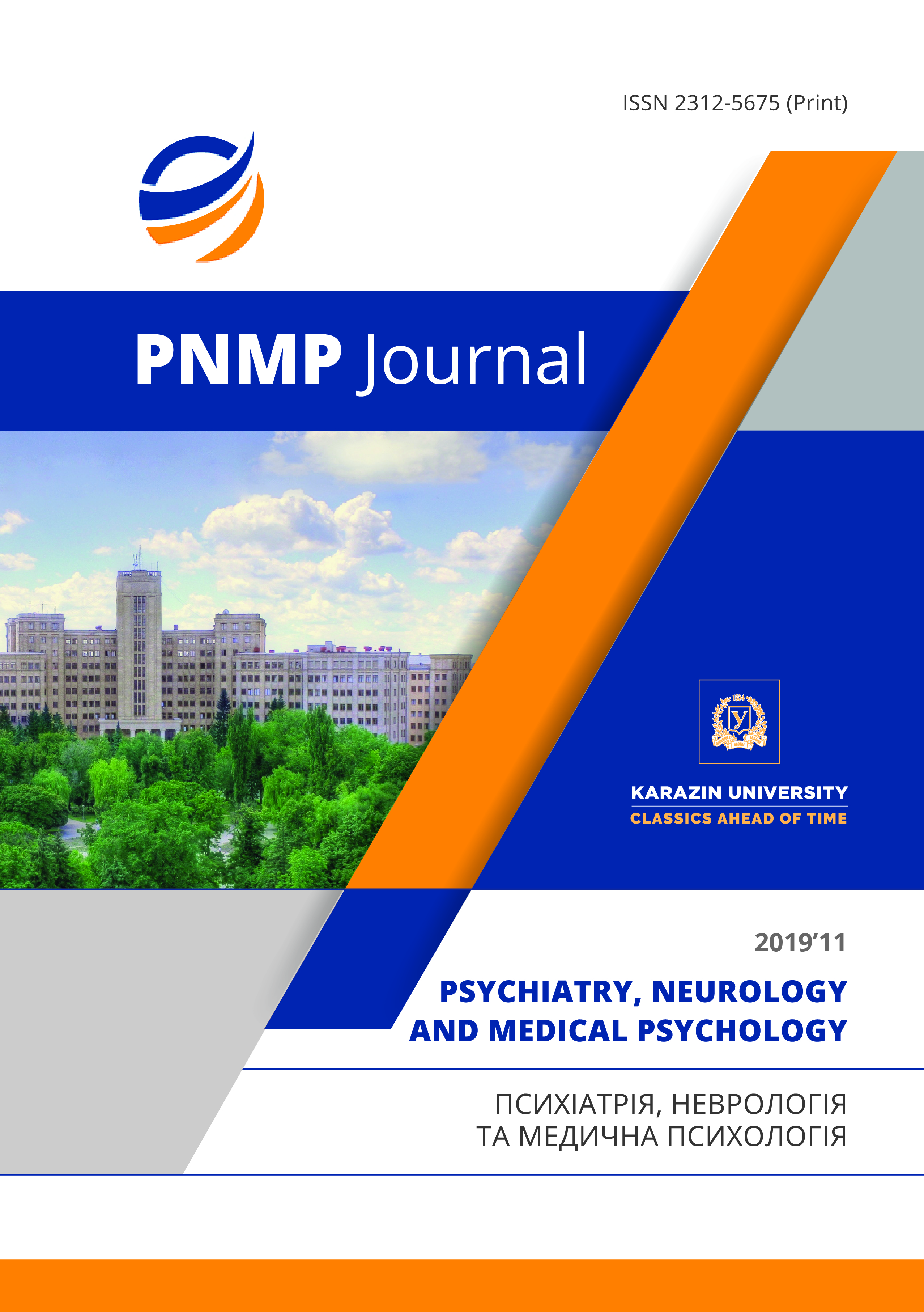Dementing brain processes in patients with Wilson’s disease and multiple sclerosis (pathogenesis and treatment approaches)
Abstract
This article discusses various aspects of dementing processes in patients with Wilson’s disease (WD) and multiple sclerosis (MS), followed by a discussion of current pathogenetic treatment methods for these patients. A comprehensive clinical and laboratory study showed that the pathogenesis and staged development of the dementing process in patients with WD and MS largely coincides with those in patients with Alzheimer's disease and depends on three groups of factors: genetic predisposition, natural (biological) aging, and endo and exogenous pathogenic factors effects on the brain. Therefore, on the basis of the data presented by us, as well as literature data, it allows us to state that dementia is an organic pathophysiological syndrome of destruction of the critical mass of structural-functional blocks and systems of cognitive mechanisms of the brain. Each individual has his own, genetically determined, critical mass of cognitive mechanisms. Like any false system, this one is ultimately subject to both natural (slow) decay and pathological (accelerated) decay due to the death of neurons both in the type of apoptosis and in the type of necrosis. Thus, in patients with WD and MS, the pathogenetic process always involves structures sooner or later that ensure the functioning of the cognitive functions of the brain and lead to the development of their defects, therefore, therapy should be prescribed for the treatment of these patients. Dementia should be treated at its early stage, at the stage of cognitive impairment (CI). The general principles of managing patients with CI are the determination of the etiopathogenetic cause underlying the development of cognitive impairment, the reduction in the degree and prevention of the progression of cognitive deficit and the impact, if possible, on risk factors. Also, at all stages of cognitive deficiency, treatment of concomitant somatic diseases and correction of the emotional state are relevant. Therefore, timely prescribed comprehensive, pathogenetically substantiated personified therapy helps prevent irreversible consequences and improves the quality of life of patients.
Downloads
References
Voloshin-Gaponov I.K. Features of the content of tau protein in the blood serum of patients with hepatocerebral degeneration // I.K. Voloshin-Gaponov / Ukrainian herald of psychoneurology. 2013.- V.21. - 1 (74). - P.7-9. [In Rus].
Voloshina N.P. Dementing processes of the brain // Kharkiv. - "The basis". – 1997. - P. 180. [In Rus].
Zakharov V.V. Diagnosis and treatment of mild cognitive impairment // Neurology, neuropsychiatry, psychosomatics, 2009. - Issue. No. 2. - P. 14–19. [In Rus].
Kalashnikova L.A. Essays on angioneurology // Moscow. - 2005. - 368 P. [In Rus].
Kotov A.S. et al. Vascular dementia // Journal of Medical Advice. - 2016. - P.39-41. [In Rus].
Medvedev A.V. The pathogenesis of vascular dementia // Journal of Neuropathology and Psychiatry. – S.S. Korsakova. - 1996. – Vol. 96 (5). – P.95-100. [In Rus].
Merkin A.G. et al. Dementia in general practice (differential assessment and therapy) // Journal of Nervous Diseases. - 2016. - P.18-23. [In Rus].
Preobrazhenskaya I.S. Modern approaches to the diagnosis and treatment of Alzheimer's disease // Medical advice. - 2017. - Vol.10. - P. 26-31.
Doi:10.21518/2079-701X-2017-10-26-31. [In Rus].
Frolkis V.V. Aging and age-related pathology. Zh.AMN Ukraine. - 1995. - T.1. - P.15-25. [In Rus].
Alvarez A. BDNF as a drug target for the treatment and prevention of cognitive impairment after stroke // International Neurological Journal. - 2018, No. 5 (99). – P. 94-97. [In Rus].
Iqbal K. del C.Alonso A, Chen S et al. Tau pathology in Alzheimer disease and other tauopathies. Biochimica et Biophysica Acta (BBA). – 2005. – 1739 (Issues 2-3). – P. 198-210. Doi:10.1016/j.bbadis.2004.09.008. [In Eng].
Lovenstone S., Gauthier S. Management of dementia // London: Martin Dunitz. - 2001. [In Eng].
Lulu Xie et al. Sleep drives metabolite clearance from the adult brain // Science. – 2013. – P. 342-373.
DOI: 10.1126/science.1241224 [In Eng].
Masden J. The use of SPECT for the diagnosis of dementia. New concepts in Vascular dementia. Barcelona: Espana. - 1993. - P. 51-57. [In Eng].
Plosker G.L., Gauthier S. Cerebrolysin: a review of its use in dementia. Drugs Aging, 2009. - 26 (11). – pp. 893¬915.
Doi:10.2165/11203320-000000000-00000. [In Eng].
Spector A, Orrell M, Davies S., Woods B. Reality orientation for dementia: A Systematic Review of the Evidence of Effectiveness from Randomized Controlled Trials. / The Gerontologist. – Vol. 40. – Issue 2, 1 – 2000. - P. 206–212.
Doi:10.1093/geront/40.2.206. [In Eng].
Van de Vorst IE, Vaartjes I., Geerlings MI, Bots ML, Koek HL. Prognosis of patients with dementia: results from a prospective nation-wide registry Linkage study in the Netherlands. BMJ. Open, 2015. – 5(10): e008897.
Doi:10.1136/bmjopen-2015-008897. [In Eng].
Weiner M.W. Commentary on “Diagnosis of Alzheimer’s disease: Two decades of progress.” Central role of technology in the treatment and prevention of Alzheimer’s disease. Alzheimers Dement. 2005. - 1(2). - P. 112–113.
Doi:10.1016/j.jalz.2005.09.006. [In Eng].

